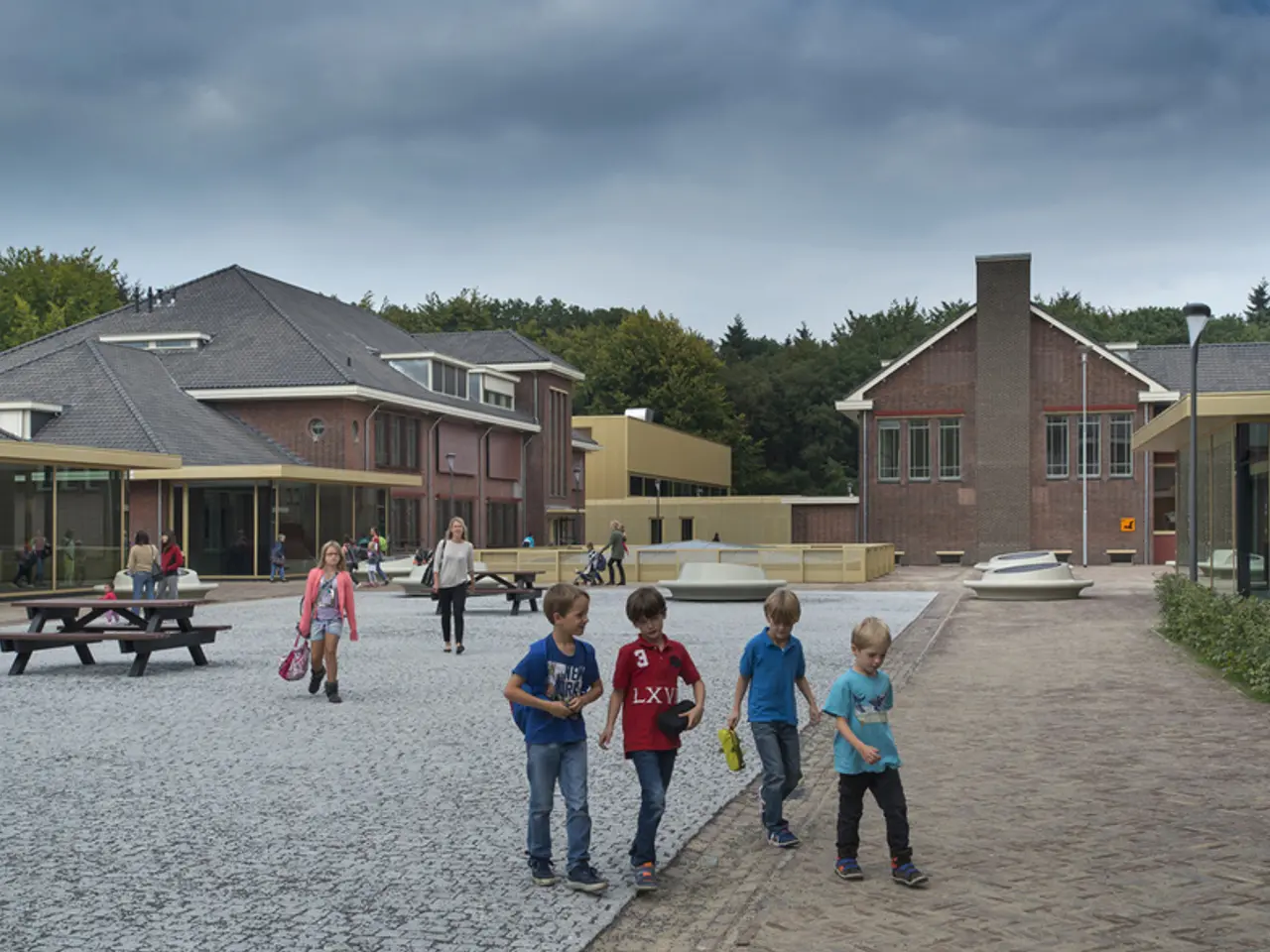In Hong Kong, where space is already limited and temperatures are elevated, climate change exacerbates hardships for the most disadvantaged residents.
In the bustling city of Hong Kong, a growing concern is the disproportionate heat experienced in overcrowded urban areas, with average temperatures in cities across Asia being up to 5.9°C (10.6°F) warmer than their rural surroundings. This heat wave is particularly affecting residents of subdivided units, such as Mr. Wu and Roy, who are experiencing health issues like heatstroke, social withdrawal, physical health problems, and sleep problems.
Families like Yeung's and Roy's are stuck in the scorching heat, with little certainty about when, or if, meaningful change will come. Indoor temperatures in such flats can reach as high as 41°C (105.8°F), even when it is cooler outside. This summer, 93% of residents said this season was less bearable than previous years, according to a SoCO survey.
The urban heat island effect in low-income districts like Sham Shui Po leads to higher overnight temperatures due to tightly packed buildings. This, coupled with the intensifying climate crisis, has resulted in an alarming number of "very hot days" in recent years.
Despite being a rich, developed city with a large public housing system, Hong Kong continues to face a severe shortage of liveable, accessible homes. For 14 years straight, Hong Kong has ranked as the world's most unaffordable housing market according to the Demographia International Housing Affordability survey.
Some experts argue that the real issue behind the subdivided housing crisis isn't just property prices or a lack of land, but a system that overlooks those most in need. Michael Wong, an economics professor at the University of Hong Kong, claims a major problem is that tenants aren't required to move out of public housing long after their incomes increase.
The Hong Kong government aims to address this crisis by building 30,000 light public housing units by 2027-28 and has over 21,000 transitional housing units in place or on the way. These measures aim to increase affordable housing supply quickly.
Accelerating public housing construction with a focus on climate adaptation is also a key strategy. This includes making homes more ventilated, better insulated, and incorporating green designs such as green roofs to address extreme heat issues experienced by subdivided flat residents.
Subsidizing energy and water costs for low-income households is another proposed solution to help them cope with rising temperatures and extreme weather worsening living conditions in poorly ventilated and small subdivided units.
Enforcing safety and livability standards in existing subdivided flats without criminalizing or evicting residents is another important measure aimed at improving housing conditions without exacerbating homelessness or displacement.
Opening up public housing turnover to prioritize the most vulnerable is another proposed solution, allowing people in urgent need to access better housing options more quickly.
Raising public awareness of housing and climate justice as linked issues is also crucial, emphasizing that improving housing for low-income families is key to equitable urban development in a warming climate.
These proposals address both the chronic shortage of safe, affordable housing and the critical challenge of extreme heat and poor living environments faced by subdivided flat residents, aiming for more equitable and climate-resilient urban housing solutions in Hong Kong.
Despite these efforts, many residents like Mr. Wu and Yeung Fong-yan continue to struggle in the heat. Mr. Wu, a resident of Sham Shui Po, experiences sleep problems due to the heat, while Yeung and her 13-year-old grandson live in a rooftop structure in Sham Shui Po, an elevator-less building, due to soaring rents and a shortage of public homes. In a 2024 summer survey by SoCO, 83% of residents in subdivided homes reported sleep problems, while 60% experienced emotional instability, more than half had skin conditions, and about a third reported dizziness. Many of these homes are poorly ventilated, windowless, and infested with cockroaches, rats, and bed bugs.
As the climate crisis intensifies, it is crucial for Hong Kong to address these issues urgently to ensure the health and well-being of its most vulnerable residents.
- The urban heat island effect, exacerbated by climate change, has become a significant concern in the environmental-science community, particularly in regions like Hong Kong, where it results in an alarming number of "very hot days".
- As the climate crisis intensifies, policymakers and legislators are focusing on policy-and-legislation that addresses the needs of vulnerable residents, such as subsidizing energy and water costs for low-income households and enforcing safety and livability standards in existing subdivided flats.
- In response to the critical housing crisis in Hong Kong, particularly in regards to subdivided units, the Hong Kong government is implementing measures like building more light public housing units, incorporating green designs for climate adaptation, and prioritizing the most vulnerable for public housing turnover, all in an effort to promote general-news worthy solutions for more equitable and climate-resilient urban housing.








